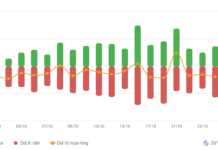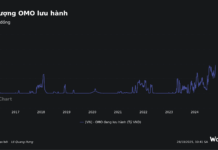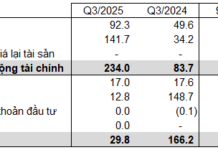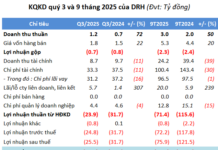2023 is an interesting year where many economists as well as business owners described as “The Year of Uncertainty”. Which industries are being affected? What are the similarities among these businesses?
Absolutely! In fact, most of the Vietnamese businesses that we have collaborated with have experienced growth in terms of revenue, market and human resources development compared to the previous year. Although they are relatively young companies with an average establishment of less than 10 years, their revenue can reach over 1,000 billion.
I see a common point among these businesses, which is their leadership team. There are two types of leaders that I can clearly observe.
One is the group of CEOs/Founders who are extremely fast and decisive in their actions but very humble when it comes to themselves. They often say, “My company doesn’t have a formal structure, or we achieved success today by doing trial and error”… and they are open to accepting and trying new approaches.
They are also very hardworking and passionate individuals. They rarely appear in the media or public because it seems like they focus all their energy, time on improving their products, services, and developing their company every day.
I often say that these will be the future of the new generation of Vietnamese businesses, and I truly believe that they will go far. I call this group the “proactive adaptive” group. And when they say they are not formal in terms of processes, systems or methods, I think in this “war period,” sometimes being too structured can hinder businesses from adapting quickly.
Another group, I think they are “Forced to Adapt” because if they didn’t “wake up in time,” 2023 could have been worse. After a long period of complacency and not realizing any urgency for innovation, they have determinedly carried out new projects of “innovation”.
Even leaders are willing to do things that they have never done before. For example, letting go of people who are not suitable, cutting off vague ideas and projects to focus on survival. They focus on fundamental aspects rather than just hot growth like in previous years of Covid: rebuilding the team, reviewing products, customer experience…

According to market research, these businesses have grown by finding new business directions in difficulties, or even if they already have a new business direction, they have different solutions to surpass other businesses in the same industry and high competition.
Both of them! Just like the business I am currently advising. Initially, they only sold Fitness products on Amazon, but thanks to continuously trying to sell new items and exploring new markets, they have expanded new business opportunities.
So while other businesses are looking at risks, they continue to “continuously experiment”. Nowadays, instead of spending time planning for perfection, it’s better to spend more time “experimenting”.
Another business proactively changes its management model instead of managing in one direction like the hierarchical system where all authority and innovative projects are decided by the highest leaders. Now, they have additional “network” models. This means there are more projects led by different teams, various departments participating together, and this has removed the barriers between departments, as well as enabled quick dissemination of innovations.
Organizations that create more space for more people to practice leadership and proactivity, not just a group of people with the title “leader,” will be more successful.
Will 2024 be another difficult year for the business community? Do you foresee any specific bright spots?
I think the only certain thing that we can be sure of is that “everything will change rapidly” and we can hardly predict how things will progress, but always remember “in danger, there are opportunities” as our elders say. Based on the research and consulting work that I have been doing for many years on the Science of Change by Professor John Kotter, there are 3 common points that businesses have overcome, or we can say 3 bright spots that businesses can consider:
First, the entire organization focuses on finding opportunities rather than threats. This is based on brain science – if we only focus on threats, our performance will definitely decrease. Also, maintaining these opportunities within the organization as a big context for the organization to aim for.
Second, gather a diverse group of leadership that has diverse capabilities, experiences, and departments to implement new innovative projects.
Third, equip the team (especially the leaders) with the ability to change and lead change, as well as build new habits in the organization to have an adaptive culture and growth mindset. For example: Value progress, try new things, seek and listen to different opinions…

How do businesses foster adaptation and create an adaptive culture?
I think each business in each industry will analyze where the opportunities lie for their own organization to come up with new strategies and directions. However, the first thing that businesses need to do is to start from within their own organization, in addition to looking at the market, customers, or competitors. Sometimes, the opportunities are not far away, opportunities come from recognizing and letting go of old mindsets, old ways of doing things, or habits in decision-making and actions. One key action to “lead change” is to identify the barriers including individuals, processes/policies that hinder quick decision-making, or hinder innovative projects.
Let me tell you a funny story. There was a company that had been stagnant for years, and the most drastic change happened when the CEO decided to appoint two key positions that were not suitable in terms of competence, as well as the cause of difficulty in collaborating with other departments. So sometimes, we don’t need to add more, but sometimes we have to learn to let go. So in this situation, it is an opportunity for us to optimize and “burn excess fat” within the organization.
In your talk, you often mention “leading change and organizational renewal”. What is it? Where should a business start the change process?
The exact term is “Leading change and organizational renewal”. It is a program that I attended and studied at Harvard Business School in 2022, along with leaders from corporations as well as government officials. It was the first time that I realized that leading change also needs to be equipped with skills, and it requires proper steps and every organization, business, school, or government needs to be equipped with these skills.
And it starts with “diagnosing” the business’s issues related to strategy execution… It could be due to insufficient capability and motivation of individuals/teams, or because of misidentifying Key Success Factors – focusing on the wrong things. Or it could be due to processes, policies that are not supportive.
After diagnosing the issues, a sense of “urgency” needs to be created so that the entire organization knows why we need to change – what opportunities we have.
How much resources should be allocated to change?
The biggest resource that needs to be invested is not money, but it is time, perseverance, and determination of the leadership. Because leading change cannot happen overnight or have immediate results, but if we persist, we may see results within at least 3-6 months as the first milestones on the marathon route.
And we need to sustain this adaptation to turn it into a culture, daily habits/behaviors.

Thank you for your insights!





































